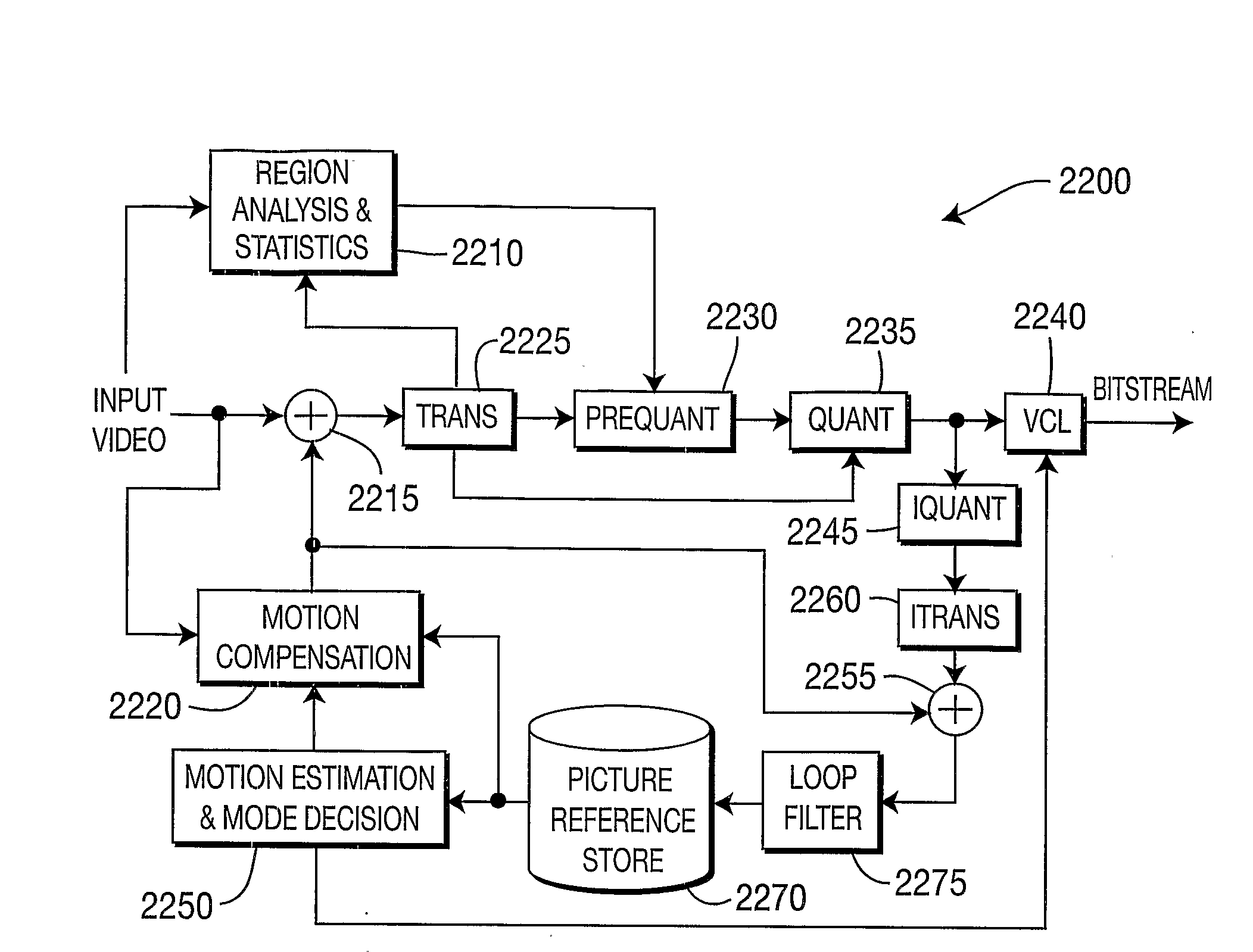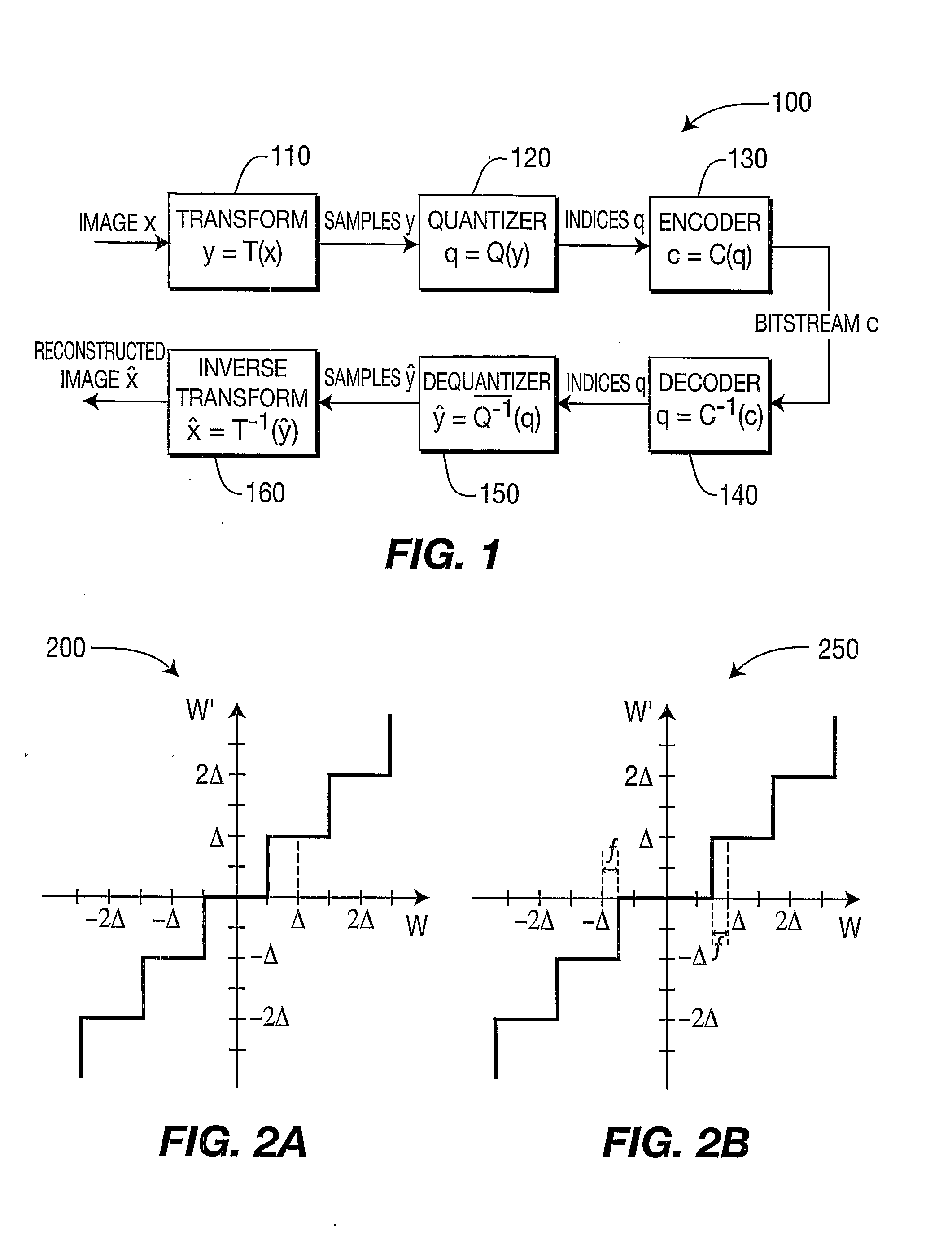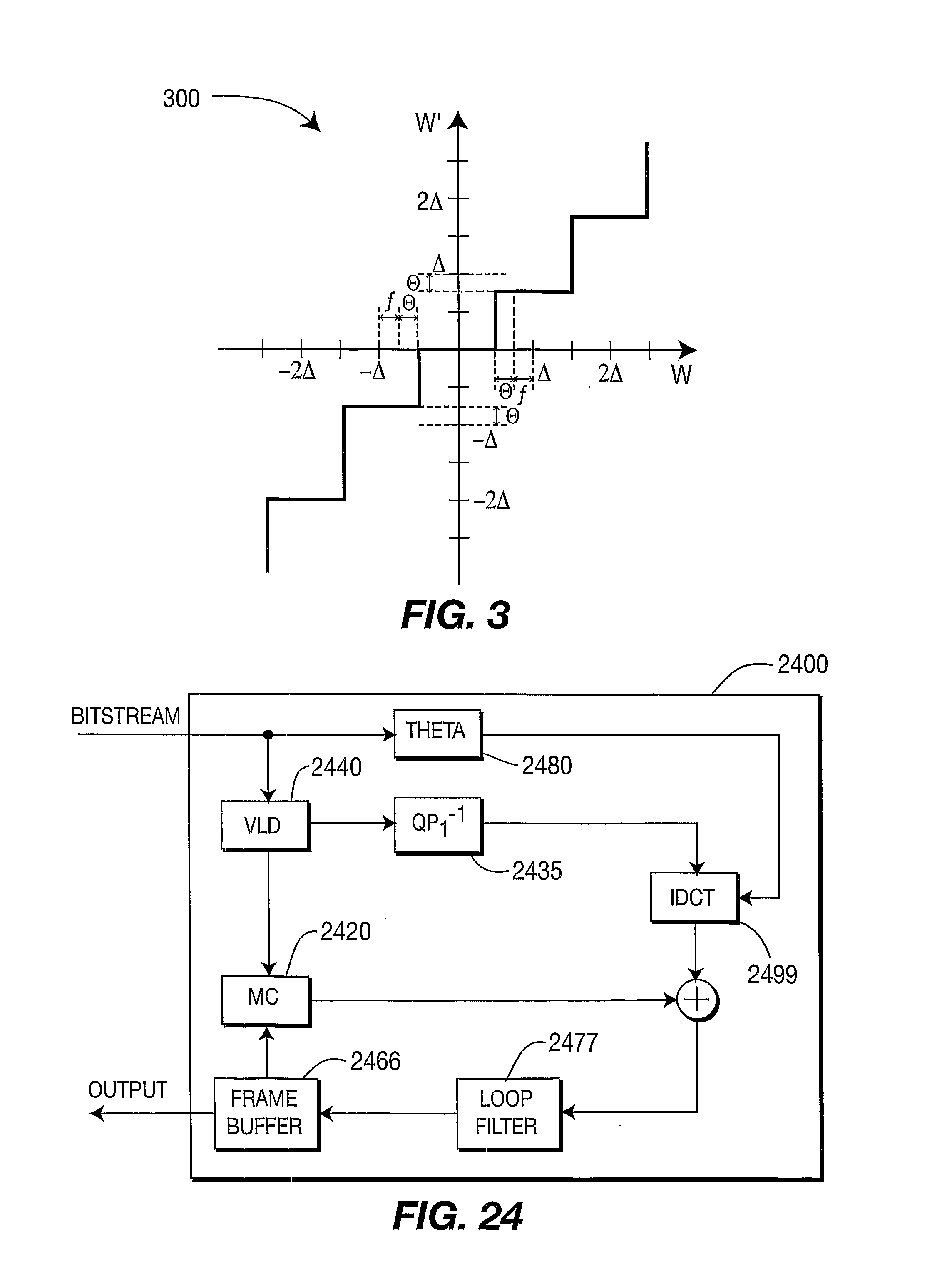[0089] A description will now be given of some of the many attendant advantages / features of the present invention, according to various illustrative embodiments of the present invention. For example, one
advantage / feature is an encoding apparatus and method in which dead-zone quantization is performed adaptively by considering coefficient position and associated distribution. Another
advantage / feature is the encoding apparatus and method as described above, wherein
adaptation is performed depending on at least one of coding mode (intra or inter), color component, transform size, and if necessary field and frame
macroblock coding
modes. Yet another
advantage / feature is the encoding apparatus and method with
adaptation as described above, wherein distribution statistics are collected separately for each different case. A further advantage / feature is the encoding apparatus and method with
adaptation as described above, wherein distribution statistics are collected based on region characteristics (variance, edges, and so forth). A still further advantage / feature is the encoding apparatus and method as described above, wherein dead-zone quantization is performed in a
two step method, first to determine a preliminary level using a fixed dead-zone /
rounding control, and then based on this level repeat the quantization using a level dependent dead-zone /
rounding control. Also, another advantage / feature is the encoding apparatus and method with 2-step dead-zone quantization as described above, wherein the level dependent
rounding control is computed based on the piecewise distribution within that level. Moreover, another advantage / feature is the encoding apparatus and method with 2-step dead-zone quantization and level dependent rounding control as described above, wherein computation is performed using distribution concentrations (distribution areas) within the reconstruction area. Further, another advantage / feature is the encoding apparatus and method with 2-step dead-zone quantization and also with level dependent rounding control, wherein arithmetic integral methods, such as the trapezoid or simplex approximation methods are used to compute the level dependent rounding control. Additionally, another advantage / feature is the encoding apparatus and method with 2-step dead-zone quantization as described above, wherein
distortion is also considered within the computation. Moreover, another advantage / feature is the encoding apparatus and method as described above, wherein certain coefficients originally set to level zero are instead forced to a higher level, in an attempt to improve
subjective quality. Also, another advantage / feature is the encoding apparatus and method with coefficient level forcing as described above, wherein such decision is based on
Rate Distortion Optimized criteria. Further, another advantage / feature is the encoding apparatus and method as described above, wherein dead-zone quantization is refined through the transmission and consideration of a set of offsetting quantization matrices Θ. Also, another advantage / feature is the encoding apparatus and method with dead-zone quantization refined through offsetting matrices as described above, wherein Θ values have different
impact at different levels. Moreover, another advantage / feature is the encoding apparatus and method with dead-zone quantization refined through offsetting matrices as described above, wherein Θ is computed based on image statistics and coefficient distributions. Further, another advantage / feature is the encoding apparatus and method with dead-zone quantization refined through offsetting matrices and Θ computed based on image statistics and coefficient distribution as described above, wherein Θ is computed using distribution concentrations (distribution areas) within the reconstruction area. Additionally, another advantage / feature is the encoding apparatus and method with dead-zone quantization refined through offsetting matrices and Θ computed based on image statistics and coefficient distribution and on distribution concentrations as described above, wherein arithmetic integral methods, such as the trapezoid or simplex approximation methods are used to compute Θ. Further, another advantage / feature is the encoding apparatus and method with dead-zone quantization refined through offsetting matrices and Θ computed based on image statistics and coefficient distribution and on distribution concentrations as described above, wherein
distortion is also considered for the computation of Θ. Moreover, another advantage / feature is the encoding apparatus and method with dead-zone quantization refined through offsetting matrices as described above, wherein Θ computation can be adjusted depending on the maximum percentage of coefficients allowed to be coded using level zero. A still further advantage / feature is the encoding apparatus and method as described above, wherein dead-zone quantization considers weighted quantization matrices that are computed based on the distribution characteristics for all coefficients. Another advantage / feature is the encoding apparatus and method with adaptation, distribution statistic collection based on region characteristics, and dead-zone quantization with weighted matrices
computer based on distribution characteristics for all coefficients as described above, wherein only distribution of “most significant regions” is considered for this computation. Moreover, another advantage / feature is the encoding apparatus and method with adaptation, distribution statistic collection based on region characteristics, and dead-zone quantization with weighted matrices
computer based on distribution characteristics for all coefficients as described above, wherein all different regions are considered for the computation of weighted matrices through the use of a weighted averaging method based on subjective
impact and occurrence statistics.
 Login to View More
Login to View More  Login to View More
Login to View More 


